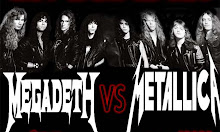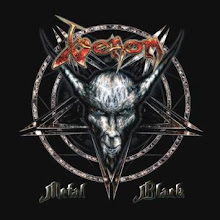 Heavy metal (often referred to simply as metal) is a genre of rock music that developed in the late 1960s and early 1970s, largely in the United Kingdom and the United States. With roots in blues-rock and psychedelic rock, the bands that created heavy metal developed a thick, massive sound, characterized by highly amplified distortion, extended guitar solos, emphatic beats, and overall loudness. Heavy metal lyrics and performance styles are generally associated with masculinity and machismo.
Heavy metal (often referred to simply as metal) is a genre of rock music that developed in the late 1960s and early 1970s, largely in the United Kingdom and the United States. With roots in blues-rock and psychedelic rock, the bands that created heavy metal developed a thick, massive sound, characterized by highly amplified distortion, extended guitar solos, emphatic beats, and overall loudness. Heavy metal lyrics and performance styles are generally associated with masculinity and machismo. The first heavy metal bands such as Led Zeppelin, Black Sabbath and Deep Purple attracted large audiences, though they were often critically reviled, a status common throughout the history of the genre. In the mid-1970s Judas Priest helped spur the genre's evolution by discarding much of its blues influence; Motörhead introduced a punk rock sensibility and an increasing emphasis on speed. Bands in the New Wave of British Heavy Metal such as Iron Maiden followed in a similar vein. Before the end of the decade, heavy metal had attracted a worldwide following of fans known as "metalheads" or "headbangers".
In the 1980s, glam metal became a major commercial force with groups like Mötley Crüe. Underground scenes produced an array of more extreme, aggressive styles: thrash metal broke into the mainstream with bands such as Metallica, while other styles like death metal and black metal remain subcultural phenomena. Since the mid-1990s, popular styles such as nu metal, which often incorporates elements of funk and hip hop; and metalcore, which blends extreme metal with hardcore punk, have further expanded the definition of the genre.






No comments:
Post a Comment